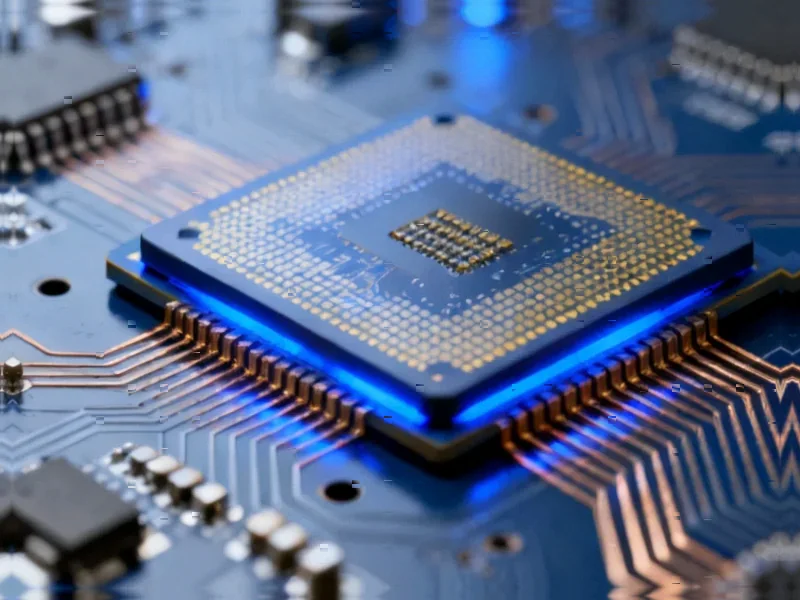According to Wccftech, NVIDIA’s Blackwell B30A chip faces complete rejection in China due to Beijing’s reluctance to adopt American AI technology, with President Trump reportedly positioning himself as a “referee” in the ongoing dispute. The B30A chip allegedly features only half the architectural performance of mainstream Blackwell solutions, leading China to avoid the offering entirely in favor of domestic alternatives from companies like Huawei, Cambricon, Moore Threads, and BirenTech. NVIDIA’s market share in China has reportedly dropped to zero following regulatory investigations into the company’s H20 AI chips, creating a complete deadlock in what was once a crucial market for the chipmaker. The situation appears to originate from Beijing’s preference for developing its own AI ecosystem rather than relying on American technology stacks.
Table of Contents
The Geopolitical Chess Game Intensifies
What we’re witnessing extends far beyond a simple trade dispute—this represents a fundamental shift in global technology power dynamics. The Trump administration’s positioning as “arbitrator” rather than active participant suggests a calculated strategy to avoid direct confrontation while maintaining pressure on China’s technological ambitions. This approach contrasts sharply with previous administrations’ more direct interventions in tech trade disputes. The reality is that both nations recognize the strategic importance of artificial intelligence dominance, with AI capabilities increasingly viewed as critical to national security and economic competitiveness in the 21st century.
The Technical Realities Behind the Standoff
The performance limitations of NVIDIA’s proposed B30A chip reveal deeper structural issues in the U.S.-China tech relationship. When a company like NVIDIA must deliberately handicap its products to comply with export controls, it creates an unsustainable business model. The reported 50% performance reduction essentially makes the chip uncompetitive against domestic alternatives that face no such restrictions. More importantly, this performance gap gives Chinese companies like Huawei valuable time to close the technological divide while operating in a protected market. The situation creates a perverse incentive where export controls, intended to maintain U.S. technological superiority, may actually accelerate China’s development of competitive domestic alternatives.
China’s Domestic Ecosystem Matures Rapidly
What makes this standoff particularly significant is the timing—China’s domestic AI chip industry has reached a critical maturation point. Huawei’s development of an entirely internal tech stack, including self-built HBM (High Bandwidth Memory), represents a major milestone in China’s technological independence. This isn’t just about replacing NVIDIA’s chips; it’s about building an entire alternative ecosystem that includes software frameworks, development tools, and supporting infrastructure. The coordinated efforts between Huawei, Cambricon, Moore Threads, and BirenTech suggest a strategically planned division of labor across different segments of the AI computing market, from cloud infrastructure to edge applications.
Broader Market Implications
The complete evaporation of NVIDIA’s China market share represents a seismic shift with ripple effects across the global semiconductor industry. While NVIDIA has successfully diversified its revenue streams, the loss of the world’s second-largest economy as a customer creates long-term strategic challenges. More concerning for U.S. tech leadership is the potential for China’s domestic champions to eventually compete in global markets once they achieve scale and technological parity. The current situation in Beijing suggests Chinese leadership believes they’re within striking distance of that goal, making compromise less attractive than pursuing technological self-sufficiency.
Realistic Outlook and Strategic Considerations
The path forward appears constrained by fundamental geopolitical realities. Even if NVIDIA could offer a more capable B30A configuration, approval from the Trump administration seems unlikely given current strategic priorities. Meanwhile, China’s investment in domestic alternatives appears irreversible. The most probable outcome is a bifurcated global AI market, with separate technology stacks developing in the U.S. and China. This technological decoupling carries significant costs for both sides—reduced economies of scale, duplicated R&D efforts, and constrained innovation through reduced global collaboration. However, given the strategic importance both nations place on AI leadership, these costs appear acceptable to policymakers on both sides of the Pacific.




